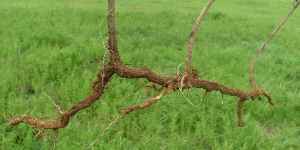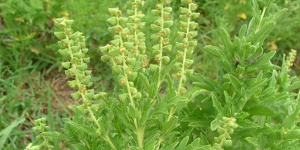Perennial ragweed
Perennial ragweed (Ambrosia psilostachya) is a State prohibited weed.

If you find perennial ragweed
If you think you may have seen perennial ragweed, please contact us by:
- completing this form
- calling our Customer Service Centre on 136 186
- emailing weed.spotters@agriculture.vic.gov.au
Please do not attempt to treat or dispose of this weed yourself. We will treat, remove and dispose of perennial ragweed safely, at no cost to the land owner.


Why you must report perennial ragweed
Perennial ragweed is native to North America but now occurs on every continent, having spread widely in the past 150 years.
Perennial ragweed does not currently occur in Victoria, after small infestations were eradicated in the 1960s. However, reintroduction from established NSW populations remains a threat.
Perennial ragweed is one of a suite of Ambrosia species globally recognised among the most problematic of invasive weeds. It thrives in disturbed environments, therefore placing urban and agricultural areas at risk.
It places agriculture, urban areas and our environment at risk due to it being:
- strongly competitive, with dense infestations reducing crop and pasture production
- unpalatable to cattle
- able to produce allelopathic compounds that inhibit the germination and growth of many plants, including a range of crops
- a public health concern due to its highly allergenic pollen.
Perennial ragweed also poses a seasonal public health concern due to its highly allergenic pollen.
Identifying perennial ragweed
Perennial ragweed is a large and erect perennial herb with a robust lateral root system. It grows densely in human-disturbed environments, particularly in sandy soils.
Leaves are grey-green, with a glandular and hairy surface. They are lobed and occur on short stalks.
Male and female flowers occur on the same plant. Male flowers are cream-coloured and are grouped together in 3mm hemispherical cups with many gathered at the end of stems. The singular female flowers occur in the axils of upper leaves.
Perennial ragweed reproduces mostly from new shoots that grow from the highly vigorous lateral roots. The plant readily regenerates from root fragments. Soil movement can lead to wider dispersal and further infestation.


Additional information
In Australia, perennial ragweed was first recorded in NSW in 1922. It is unclear how it was introduced, although trade in grain contaminated with the seed is likely.
There is evidence that later introductions in coastal areas occurred through contaminated United States Army trucks brought over during World War 2.